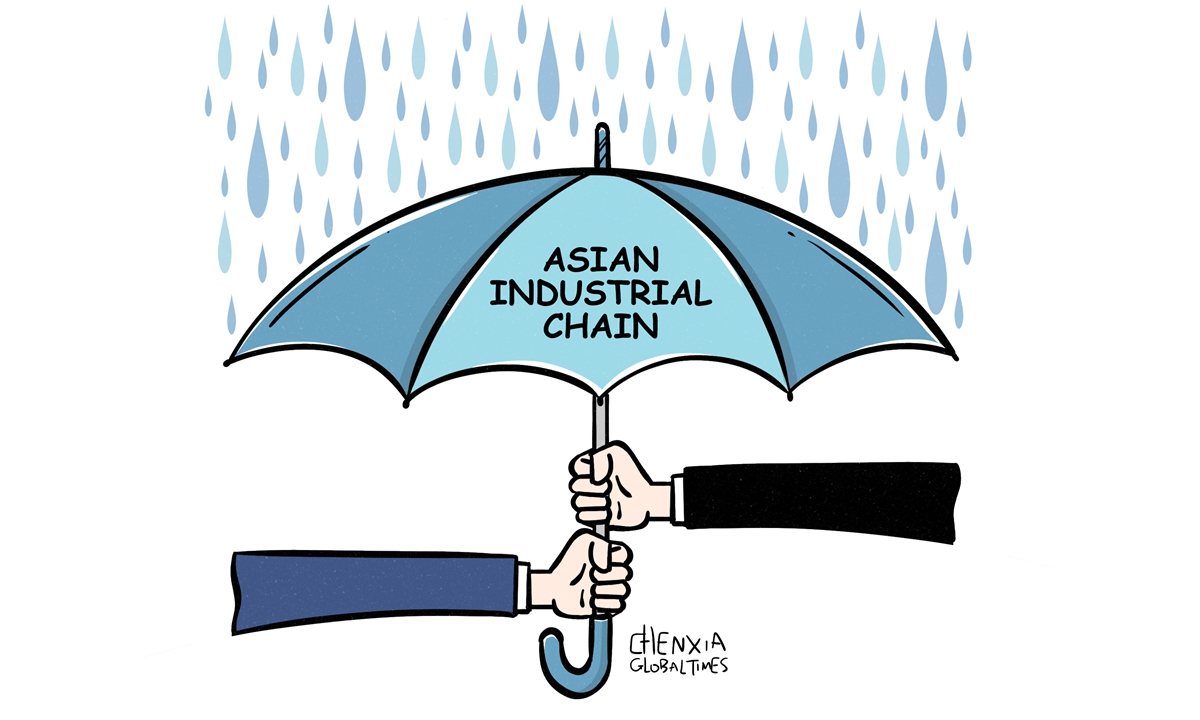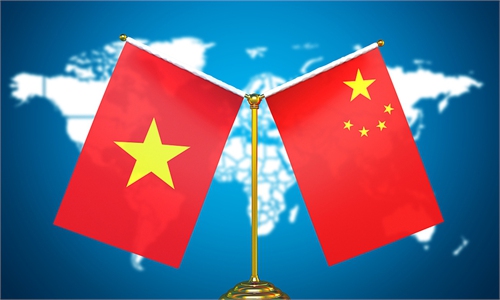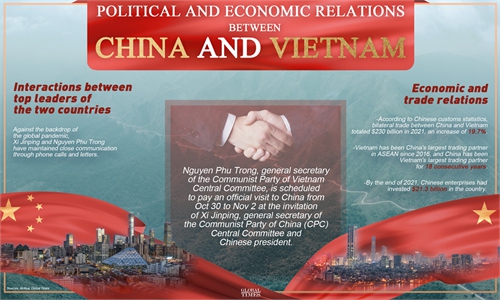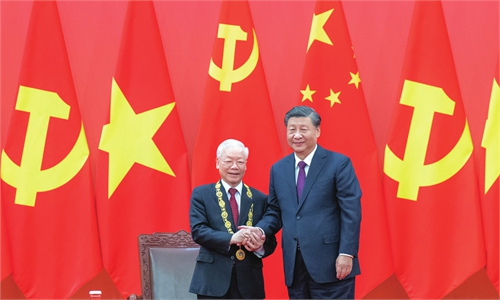
Illustration: Chen Xia/Global Times
Vietnam posted an estimated foreign trade value of $616.24 billion between January and October, up 14.1 percent year-on-year, the Xinhua News Agency reported on Monday, citing data from the country's General Statistics Office. The double-digit growth comes at time when the world is entering a period of uncertainty and the global economy is facing a grim outlook.Vietnam, one of the most dynamic emerging market economies in Southeast Asia, has inevitably felt global economic headwinds due to its growing export-oriented economy. Some Western media outlets have been keen on playing up the so-called competition between China and Vietnam and describe the latter as a rising star vying for Western business with China. However, the opposite is true, and it seems more people, including foreign businesses in Vietnam, have realized that the expanded industrial chain gives a helping hand to local businesses in defying a global downturn and boost Vietnam's export growth.
Gijae Seong, head of Amazon Global Selling in Vietnam, was quoted by Nikkei Asia as saying on Monday that its local division has grown more strongly this year than in 2021. Talking about Chinese businesses' positive role, Seong said merchants and service providers coming to Vietnam raise standards and offer lessons to Vietnamese partners, drawing on a decade of experience in China's larger online market. Besides, Chinese e-commerce sellers ship from Vietnam, increasing export volume and therefore the incentive to invest in Vietnam's logistics.
Like the rest of Big Tech, Amazon has had a rocky year partly due to macroeconomic headwinds and the consequent decline in market demands. The e-commerce giant said it expects revenue for the fourth quarter to be between $140 billion and $148 billion, representing year-on-year growth of 2 percent to 8 percent, according to CNBC. In Vietnam, the number of local exporters using Amazon in the nation reportedly spiked 80 percent in the 12 months to August. The two sets of data form a sharp contrast.
Amazon's case happens to be a kind of microcosm of the bigger picture that expanded industrial chains help exporters and importers in Asia weather the global economic slowdown. Downside risks have dominated the global economic outlook and some countries are expected to slip into recession heading into 2023. The US and European economies are being buffeted by common headwinds, chief among them is inflation, which makes the cost-of-living crisis a growing concern and results in weak demand of imported goods. Export-oriented economies in Asia have been the worst hit this year, with many manufacturers lose orders from US and EU importers.
As global supply chains realign in the wake of global economic turmoil, China and ASEAN have become more important markets for each other. China has remained the largest trading partner of ASEAN, while Vietnam has continued to be the largest trade partner of China in ASEAN and the sixth largest trade partner in the world. China's investment in Vietnam has mainly been concentrated in processing and manufacturing industries, especially electronics, mobile phones, computers, textiles and clothing. Close economic and trade cooperation are conducive to shoring up growth and staving off external risks, which is in line with the common interests of development and prosperity of the two countries and the region.
Vietnam's economic recovery accelerated over the past months on the back of resilient manufacturing and a robust rebound in services. The country's GDP growth is forecast to surge from an estimated 2.6 percent in 2021 to 7.5 percent in 2022, a World Bank economic update for Vietnam released in August showed. The robust development of Vietnam's export-oriented economy and manufacturing sector, to a certain extent, is a result of its integration into the regional industrial chain and intertwined connection with the Chinese economy. The two economies are interconnected and mutually reinforcing.
With rising global economic concerns, economies in Asia need cooperation partners to defy headwinds. The main reason why Western countries have been touting the theory that Vietnam could replace China to become the new manufacturing powerhouse is because they want to sow discord and use the fast-growing country to contain China; however, such voices only aims to hurt Vietnam's economy and the regional supply chains.
The author is a reporter with the Global Times. bizopinion@globaltimes.com.cn



